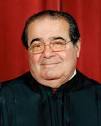Scalia’s Death and Obama’s Clean Power Plan
The death of Supreme Court Justice Antonin Scalia complicates the already complex judicial review of the Obama administration’s Clean Coal Plan. According to Washington-area attorney David Masselli, who practices before the court, the “extraordinary” stay the court granted by 5-4 to prevent the new Environmental Protection Agency rules from going into effect until the Supreme Court finishes its review becomes even more extraordinary with Scalia’s death.

Scalia was one of the five votes in favor of the stay, and dealing with the impact of a 4-4 split on the court is unknown territory. “I’ve never heard of the court reversing a stay,” Masselli said, “but no one has ever seen a stay like this.”
The court’s language in the stay guarantees it will be in effect even after the U.S. Court of Appeals for the D.C. circuit rules. The stay prescribes that it is in effect until “disposition of the applicants’ petition for a writ of certiorari, if such writ is sought. If a writ of certiorari is sought and the Court denies the petition, this order shall terminate automatically. If the Court grants the petition for a writ of certiorari, this order shall terminate when the Court enters its judgment.”
The D.C. Circuit plans an expedited hearing in early June and is unlikely to rule this summer. “I’m expecting a hundred-plus page ruling and those can’t be written overnight,” said Masselli. The losing side in the appeals court could ask for a full, or ‘en banc” review of the three-judge ruling, adding another 30 days for opponents of the review by the full court, and then another 14 days for replies. When the circuit court decision is final, the losing side has 90 days to file for Supreme Court review (certiorari), and the circuit court rule is stayed, and remains stayed until the Supreme Court decides whether it will take up the case.
In the Clean Power Plan, Supreme Court review is almost certain, given that it takes four votes to win review, and there are clearly four votes on each side of the issues the plan presents. “Let’s assume a pro-Obama ruling in September, the cert petition wouldn’t have to be filed until December 2016,” according to Masselli.
Only then does the Supreme Court put the matter on its docket. “It is possible that a ruling on a petition for cert might happen in the spring of 2017,” said Masselli, “so under almost any circumstance the ruling is on hold for 16 months, unless coal and the states win. If cert is granted, I would assume the case would be set on the October 2017-June 2018 calendar. Big cases are not normally decided until the end of the terms. This looks like a late June decision. So we may be looking at more than two years before any part of the regs can go into effect.”
In the case of a 4-4 tie in the high court over the Clean Power Plan, the ruling of the appeals court stands, but is not “precedent.”
Republicans have made clear they will block any Obama administration nominee to fill the court vacancy. If a Republican wins the presidential race, the Clean Power Plan is likely to be moot, as the new president almost certainly will reverse the rule. If a Democrat wins, and Republicans retain control of the Senate, the new president would not be likely to get a vote on a nominee for six months or more.